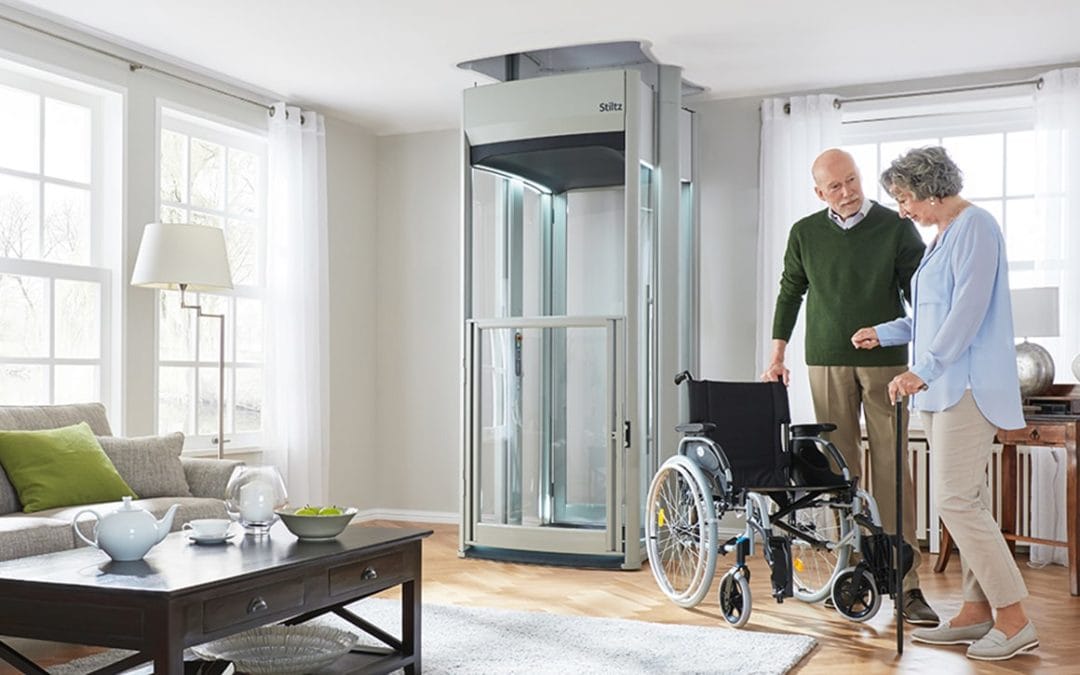There are numerous things that we realise we should do sooner, but somehow, they never seem to be a priority. Making a will, repainting the front door, the list goes on and includes making our home ready should our mobility become impaired.
Many people have commented on the appeal of having a home lift installed in the event their mobility reduces in later life, but there is a lot on uncertainty as to when this step would need to be taken.
We looked into the most common triggers that help people decide to upgrade their home with a home lift and considered when exactly is the optimum time to install a domestic lift.
Decreased Mobility
In some cases, a reduction in mobility can happen quite suddenly due to illness or following an operation. However, in other situations the drop can happen at a slow and steady pace – which can make it harder to spot in yourself or your partner. But there will be indicators to warn you that your living conditions are becoming too challenging and that action needs to be taken.
Are you:
– finding that you need to prepare yourself for making a trip up the stairs, rather than just doing it?
– finding that your balance isn’t as good as it was?
– becoming exhausted doing every day activities?
– finding that first thing in the morning or after being active that you’re experiencing an increase in aches and pains?
If you or your partner are suffering from any of the above, then it might be the right time to get in touch to arrange a free home assessment for a home lift, so you can stay mobile around your home without impacting your health further.
Degenerative condition diagnosis
Being diagnosed with a degenerative disease is a horrible time for anyone. There are many diseases classed as degenerative, such as Huntingdon’s Disease, Multiple Sclerosis, and Ehlers-Danlos Syndrome.
Often such conditions affect a person’s sight, mobility or movement, which would make moving between floors in your house increasingly difficult. With any degenerative condition there is the element of uncertainty as to what the future will hold, such as not being sure of the exact impact of the condition as well as the timescales.
In some cases, your doctor will be able to see how far the disease has progressed, predict the speed of onset and provide information on what to expect. Often people in this situation prefer to install a lift earlier on in their condition, so they don’t have to think about purchasing and installing their lift when their condition worsens.
Recurrent illnesses
Sometimes even everyday illnesses can leave you lacking in energy, and when this happens some people choose to have a home lift installed to ensure their health doesn’t continue to decline and that they have the additional support they need. As you get older illness carries with it the concern of physical frailty, so having a home lift installed can increase your peace of mind.
Remodelling your home
Even if you don’t yet have the need for a home lift, many people decide to have one installed during home renovations. This ensures the product will fit perfectly with the design of your home. This method also keeps disruption to a minimum as all remodelling work happens at once.
Future-proofing
Having secure plans for the future can give people much needed peace of mind. Whether that’s by having a will in place, a generous pension pot, or knowing that you’ll be able to remain in your home irrespective of your mobility.
The great thing about a home lift is that no matter when it is installed it will always be a great asset in your home. Whether this means simply adding another convenient means of travelling between floors, giving younger visitors a safer way to get upstairs, or enabling you to move heavier items around. If you need any more persuading, research has shown that a house with a residential lift is easier to sell than one without, so future-proofing your home certainly isn’t short of benefits.

